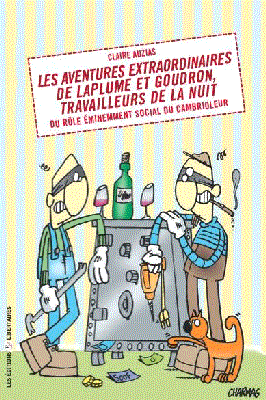Pietro, Ferrua (Reviewer)
Anarchism in America
A film by Steven Fischler and Joel Sucher
VANZETTI, Bartolomeo (1888-1927)SACCO, Nicola (1891-1927)LEHNING, Arthur (Utrech, Pays-Bas 23/10/1899-Lys-Saint-Georges, Indre, France 01/01/2000). HistorienIWW (Industrial Workers of the World)Communication. FilmsGOLDMAN, Emma (1869-1940)AVRICH, PaulFERRUA, Pietro Michele Stefano (1930-....)LE GUIN, Ursula Kroeber (1/12/1929-....)CAGE, JohnSTEIMER, MollieLiving TheaterFISCHLER, Steven. CinéasteSUCHER, JoelBERMAN, PaulREXROTH, Kenneth (1905-1982)Catholic Workers MovementFERRUA, Pietro (Piero) Michele Stefano (1930 - ....)Pacific Street Film Projects Film/Vidéo en ligne
USA, 1981. 75 Mins., 16 mm.
Original script by Paul Berman, in collaboration with Kristina Boden, Steven Fischler, Gerald Kagan, Lora Myers and Joel Sucher.
Cinematography by Joel Sucher.
Sound by Steven Fischler.
Research by Erika Gottfried.
Assistants: Barbara Derrick, Nadine Eftes, Elizabeth Garfield, Margot Williams.
Assistant camera operation by Maria Rodriguez Gil.
Assistant Editor: Caroline Sinclair.
Sound Editing by Marc De Rossi.
Additional cinematography by Joan Churchill, Gordon Quinn, Sandi Sissel.
Additional sound by Jerry Blumenthal and Pamela Yates.
Still photography and production assistance by Jonathan Rosen .
Video VHS
Steven Fischler and Joel Sucher’s Anarchism in America extemporaneously asks, "What is anarchism for you?" The meaning of the word changes depending on who’s being asked - politicians, common people interrogated on the street, or believers in anarchism, such as Murray Bookchin who is interviewed several times (although not about ecology, his specialty).
The best answer comes not as a conclusion to the film but early on from the Grande Dame of Anarchism: writer Ursula Le Guin, who is resplendent in a close-up shot at the First International Symposium of Anarchism. The event took place in Portland at Lewis and Clark College in 1980, and that is where Fischler and Sucher inaugurated the filming. Some viewers will recognize the famous solo cabaret actress Lee Grandville, Eva Lake (the youngest speaker), Prof. John Braun and some other now-disappeared participants. Among these are Arthur Lehning from Holland (who was born in 1899 and died in 2000, thereby living in three centuries), Prof. Allan Kittell from Portland, and Annette van Dongen from Belgium.
We find pearls here and there throughout the film, such as the late Kenneth Rexroth reading a poem dedicated to Sacco and Vanzetti and an interview in Mexico with Mollie Steimer, an active and courageous militant in the Russian Revolution as well as in American unions. Archival footage shows us Sacco and Vanzetti still alive and then the impotent funeral and the demonstration that followed their legal assassination. Then we have Emma Goldman, allowed in the United States for 90 days after decades of exile, declaring that she would "leave the country rather than deny my ideal" if blackmailed by the authorities. Commentary gives the viewer details about worker-owned enterprises and descriptions of Borsodi-inspired cooperatives. We learn that Fischler and Sucher sipped tequila in Mexico with the late Luis Buñuel. It is a pity that they did not interview him for their film, particularly about the anarchists who helped him produce Las Urdes (Land Without Bread) in the 1930s. We also may regret that some outstanding anarchists are not interviewed, such as Noam Chomsky (listed among the advisers), Lawrence Ferlinghetti (although we hear from Philip Levine and John Cage), The Living Theater, the IWW, the Catholic Worker Anarchists, and, last but not least, Paul Avrich (perhaps because he was already present in their previous film) ... but, then, it would be "our" film and not "their" film. Individual rights and choices are also a lesson contained in an already rich slice of American anarchism.
Pietro Ferrua
Exists in DVD at AK Press
